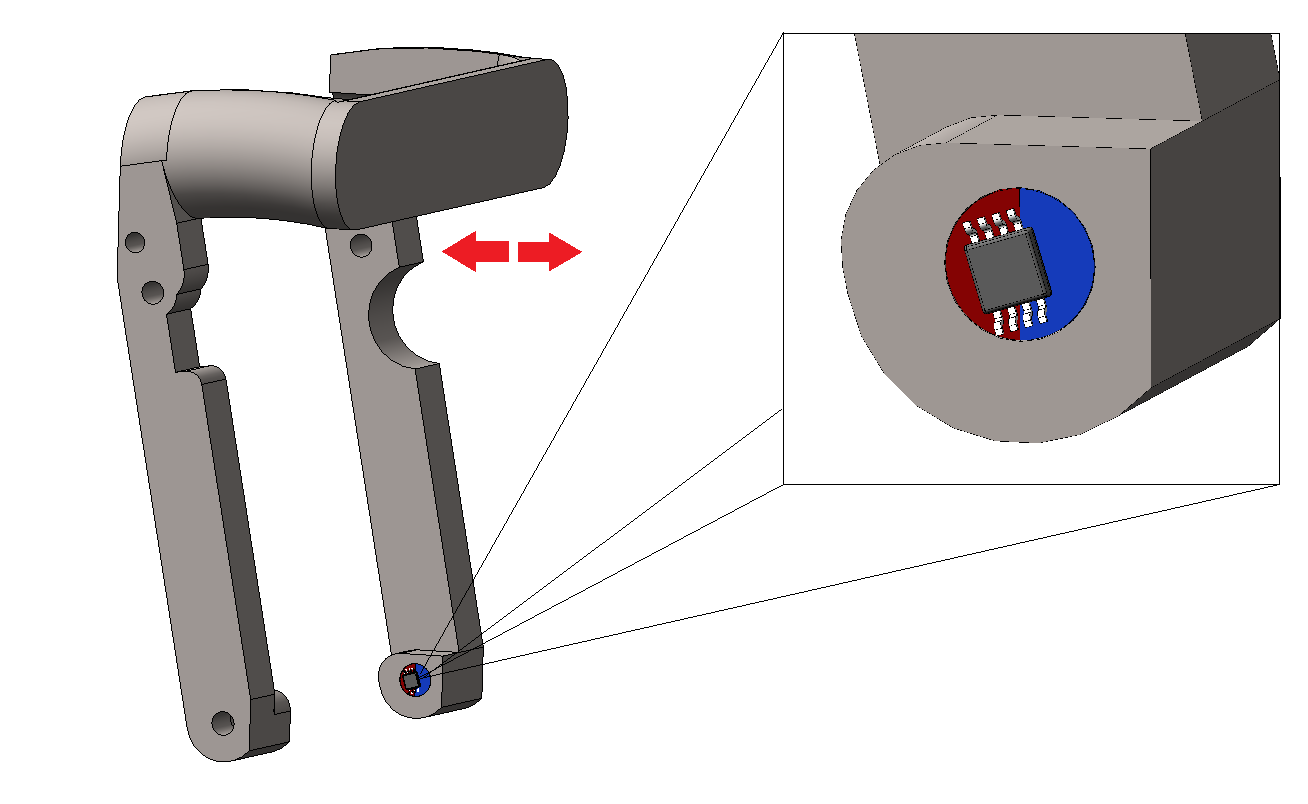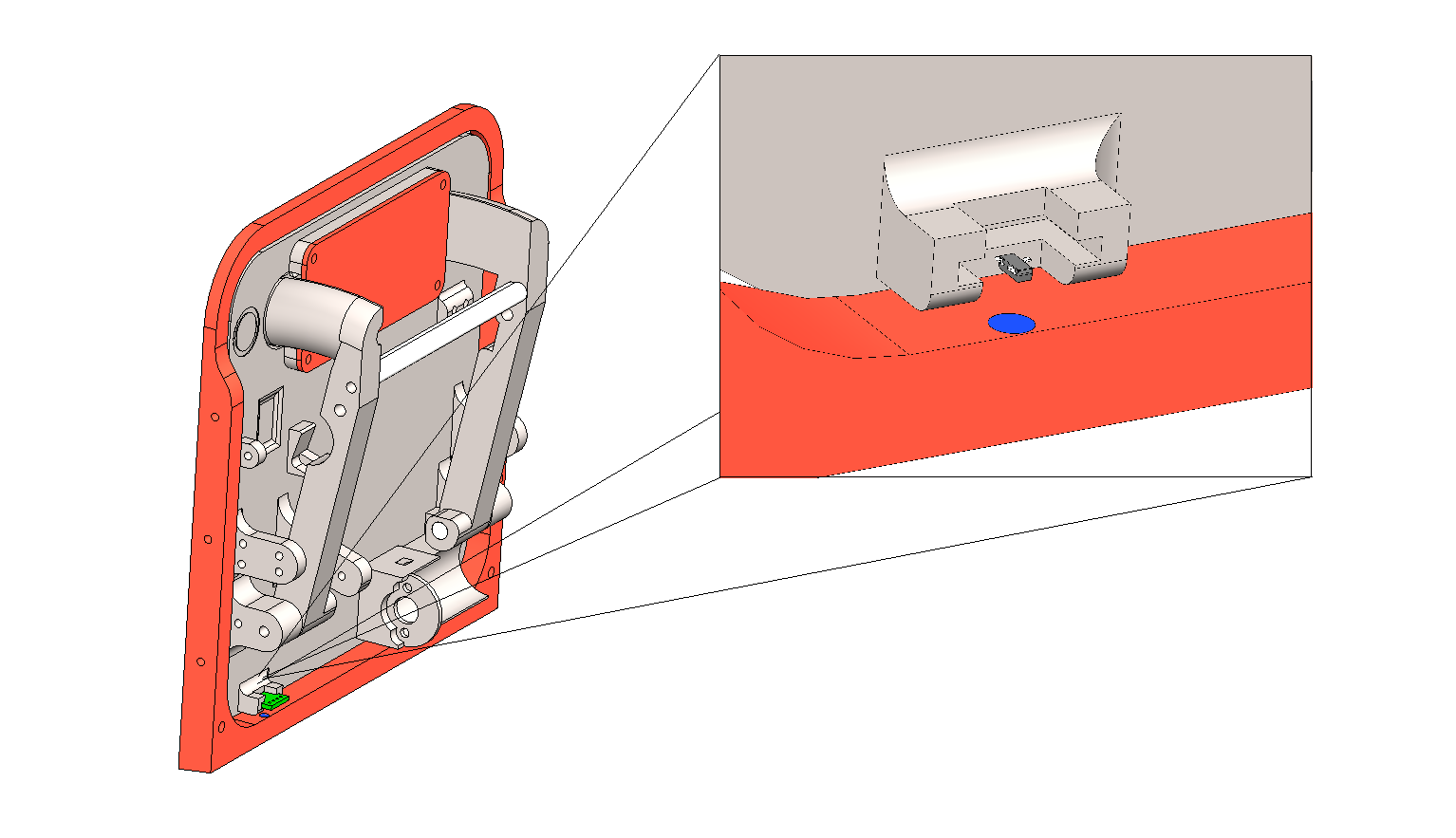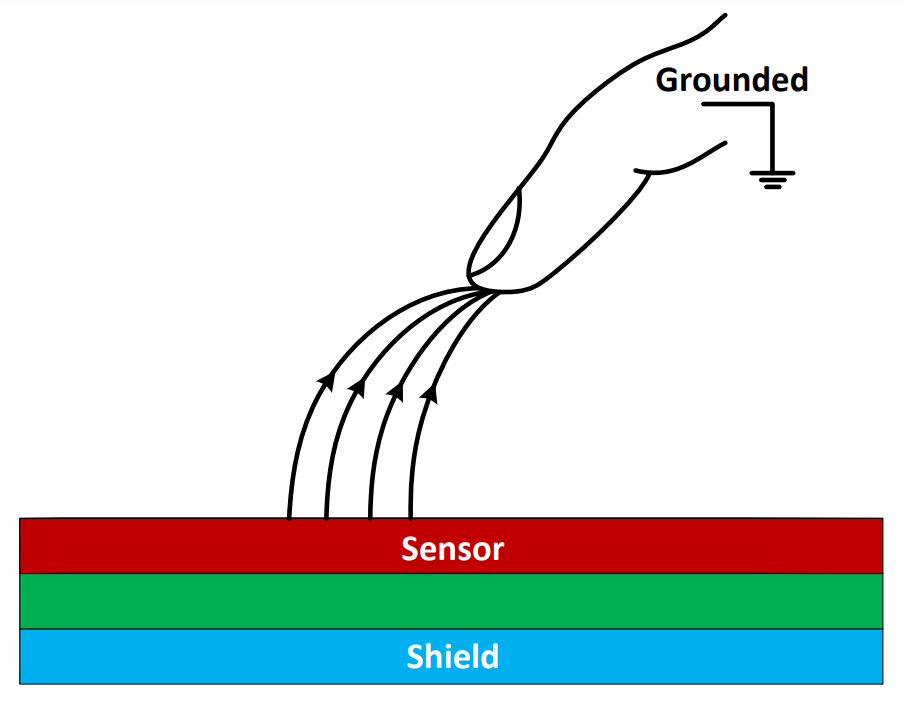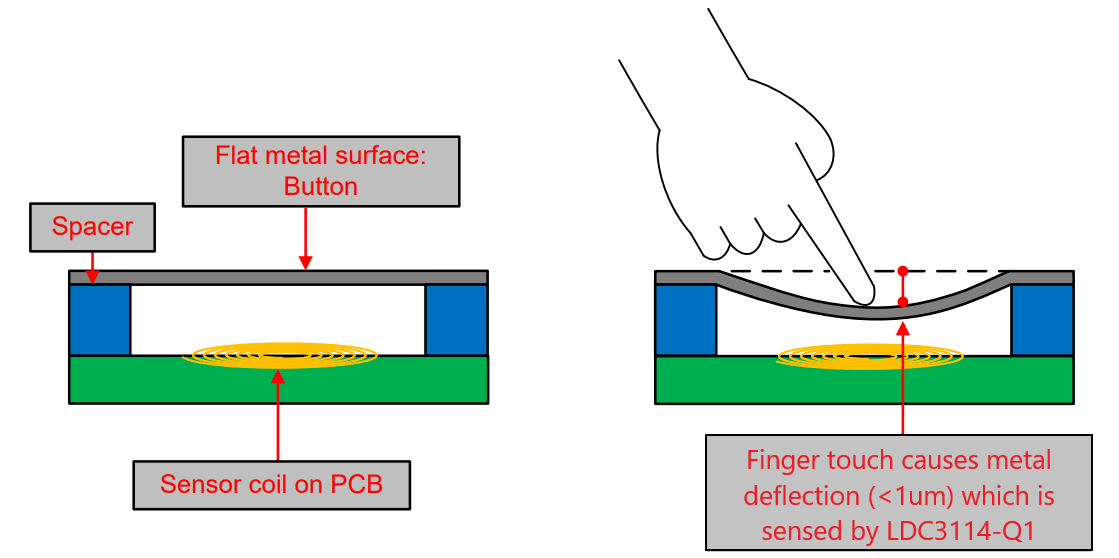SNOAA98 November 2023 FDC1004-Q1 , LDC3114-Q1 , TMAG5231 , TMAG6180-Q1
Identifying sensor requirements
Automotive door handle systems continue to become more sophisticated with the advancement of deployable and flush door handles. In these systems, the door handles are typically recessed and made flush with the body of the car, and in some cases present themselves as the driver approaches. Figure 1 shows many of the functions within automotive door handles that require position sensors. There are several different mechanical design options for the door handle. Regardless of what kind of handle a user is designing (deployable, fixed, or even pull), many of the same sensing technologies apply. This application brief discusses the benefits of implementing magnetic, capacitive, and inductive sensors in automotive door handle designs.
 Figure 1 Automotive Door Handle Position Sensors
Figure 1 Automotive Door Handle Position SensorsHandle position
In deployable door handle systems, the handles are flush with the vehicle door and are presented to the user under desired circumstances. This can be when the key fob approaches the vehicle, the result of hand proximity, or a gentle press on the handle. When triggered, an actuator extends and retracts the handle to precise positions. When designing a handle that incorporates this kind of movement, the position of the handle must be tracked precisely and accurately to not cause injury or damage to the user, handle, or other objects.
Monitoring handle position is achieved with a magnetic angle sensor capable of tracking the position of a rotating magnet embedded in the handle as it is driven by the actuator, as shown in Figure 2. The TMAG6180-Q1 is an automotive high-precision analog AMR 360° angle sensor with ultra-low latency, making the device an option to correlate the angle reading to the position of the handle. The TMAG6180-Q1 is sensitive enough to detect when the handle is touched or pulled.
This function can also be implemented with a 3D linear Hall-effect sensor such as the TMAG5170-Q1 or TMAG5173-Q1, each of which offer an integrated CORDIC to track angular direction of the changing magnetic field.
 Figure 2 Handle Position Detection
Figure 2 Handle Position DetectionDoor open and close detection
The ability to detect whether the vehicle door is open or closed is a critical feature to make sure the driver and passengers are safe. It is always important for the driver to know if a door is open or closed for security and safety. The open and close detection is frequently implemented with a mechanical switch with a spring-loaded plunger that compresses when the door closes, and releases when the door is opened. However, the mechanical parts in this design are susceptible to damage over time.
An alternate, non-mechanical implementation uses a low-power, high-precision Hall-effect switch such as the TMAG5131-Q1. The device detects when the door is open or closed by sensing the absence or presence of a magnet embedded in the door frame, as shown in Figure 3.
 Figure 3 Door Open and Close Detection
Figure 3 Door Open and Close DetectionSoft-touch and hand proximity detection
Soft-touch or hand proximity detection enables either a gentle press or simply the presence of the driver’s hand to trigger different actions within the automotive system. In deployable door handles, this can serve as an alternative method for triggering the extension of the handle, if the user must turn off passive entry features. In fixed flush door handles, the handle is a surface or cavity recessed in to the vehicle and does not move. In this case, a soft-touch on the handle or a hand in close proximity to the handle can be detected, and as a result, trigger the opening of the car door.
These functions can be implemented with capacitive or inductive sensors. In a capacitive based design, as shown in Figure 4, a metal or conductive sensor in or around the door handle connects to an FDC1004-Q1, which senses a change in capacitance when a user's hand is nearby. The FDC1004-Q1 is an automotive, 4-channel capacitance to digital converter with an active shield driver and configurable thresholds for each channel.
 Figure 4 Soft-Touch or Hand Proximity Detection with Capacitive Sensor
Figure 4 Soft-Touch or Hand Proximity Detection with Capacitive SensorIn an inductive based design, as shown in Figure 5, a flat metal target is placed above sensor coils on the PCB, which connect to an LDC3114-Q1. When the user applies a gentle press, the metal target slightly deflects, causing a change in inductance that is sensed by the LDC3114-Q1. Inductive touch designs can reliably operate in environments that have dirt, moisture, oil, or varying temperature that can cause issues for alternate sensing technologies.
 Figure 5 Soft-Touch Detection with Inductive Sensor
Figure 5 Soft-Touch Detection with Inductive SensorButton press detection
Some aspects of automotive doors and door handles make use of an actual button press, such as a hood touch button, door keypad, push-button, or tailgate release system. Traditionally, this functionality is achieved with a contact-based mechanical implementation.
Increased reliability and lifetime is achieved in these systems using a contactless inductive sensing design. A metal target embedded in the push-button or handle is pressed and deflected toward sensor coils on the PCB, similar to the behavior shown in Figure 5. An inductance to digital converter such as the LDC3114-Q1 connects to the sensor coil and detects changes in inductance. An inductive sensing design can not only detect whether the button has been pressed, but the magnitude of the press as well.
Summary
As automotive door handles continue to evolve, various sensing technologies help optimize safety, reliability, and user experience over traditional mechanical designs. Consider the following position sensing devices for automotive door handle systems as listed in Table 1 .
Recommended devices
| Sensing application | Problem | Suggested sensors | How sensor improves function |
|---|---|---|---|
| Handle position | Monitoring handle position is required to make sure the door handle is deployed and retracted to the proper positions. | TMAG6180-Q1 TMAG6181-Q1 TMAG5170-Q1 TMAG5173-Q1 | AMR sensor with differential sine and cosine outputs or 3D Hall-effect sensors with integrated CORDIC provide absolute angle data that correlates to handle position. |
| Door open and close detection | Detecting when the door is opened or closed is crucial to protecting the driver, passengers, and vehicle. | TMAG5131-Q1 | Low-power Hall-effect switch detects the presence or absence of a magnet embedded in the door frame when the door is closed or opened, respectively. |
| Soft-touch/hand proximity detection | Soft-touch or hand proximity detection can be used to trigger the door handle to deploy, and can also be used to open doors that feature fixed flush door handles. | FDC1004-Q1 LDC3114-Q1 | Capacitive or inductive sensors can detect a change in capacitance or inductance when a soft-touch is applied to an area. Capacitive sensors can also detect hand proximity. |
| Button press detection | Button press can be used in door and hood push-buttons, door keypads, trunk release systems, and fixed door handles. | LDC3114-Q1 | Inductive sensors detect a change in inductance as a result of a force applied to a metal target surface, causing the sensor to deflect and reduce the distance between the target and the inductive coils. |
References
- Texas Instruments, TI-MAGNETIC-SENSE-SIMULATOR, simulation tool.
- Texas Instruments, Designing with position sensors: Automotive door handles, video.
- Texas Instruments, LDC-HALL-HMI-EVM, EVM tool folder.
- Texas Instruments, Inductive Touch System Design Guide for HMI Button Applications, application note.
- Texas Instruments, Capacitive, Inductive, and Hall Sensing for HMI in Automotive Applications, application note.
- Texas Instruments, Inductive Touch and Magnetic Dial Contactless User Interface Reference Design, reference design.
- Texas Instruments, LDC1314KEYPAD-EVM, EVM tool folder.